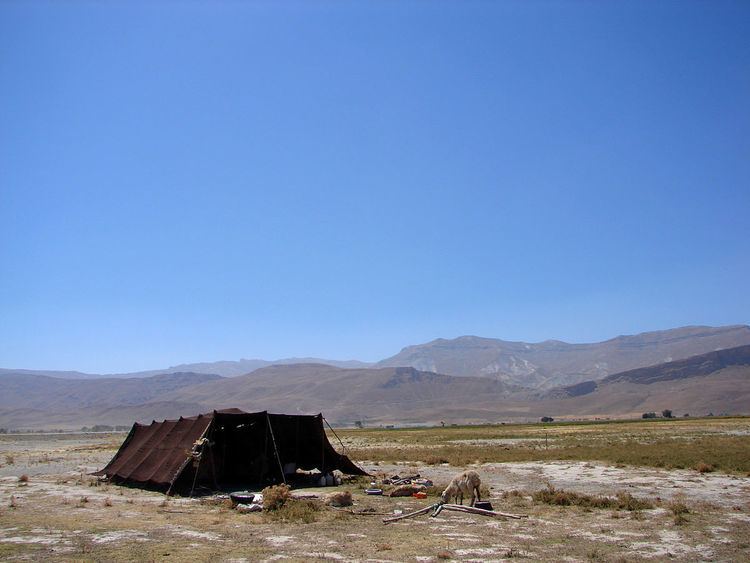 | ||
Pastoralism is the branch of agriculture concerned with the raising of livestock. It is animal husbandry: the care, tending and use of animals such as camels, goats, cattle, yaks, llamas, and sheep. "Pastoralism" generally has a mobile aspect; moving the herds in search of fresh pasture and water (in contrast to pastoral farming, in which non-nomadic farmers grow crops and improve pastures for their livestock).
Pastoralism is a successful strategy to support a population on less productive land, and adapts well to the environment. For example, in savannas, pastoralists and their animals gather when rain water is abundant and the pasture is rich, then scatter during the drying of the savanna.
Pastoralists often use their herds to affect their environment. Grazing herds on savannas can ensure the biodiversity of the savannas and prevent them from evolving into scrubland. Pastoralists may also use fire to make ecosystems more suitable for their food animals. For instance, the Turkana people of northwest Kenya use fire to prevent the invasion of the savanna by woody plant species. Biomass of the domesticated and wild animals was increased by a higher quality of grass.
Pastoralism is found in many variations throughout the world. Composition of herds, management practices, social organization and all other aspects of pastoralism vary between areas and between social groups. Many traditional practices have also had to adapt to the changing circumstance of the modern world, including climatic conditions affecting the availability of grasses. Ranches of the United States and sheep stations and cattle stations of Australia are seen by some as modern variations.
Origins
One theory is that pastoralism was created from mixed farming. Bates and Lees proposed that it was the incorporation of irrigation into farming which ensued in specialization. Advantages of mixed farming include reducing risk of failure, spreading labour, and re-utilizing resources. The importance of these advantages and disadvantages to different farmers differs according to the sociocultural preferences of the farmers and the biophysical conditions as determined by rainfall, radiation, soil type, and disease. The increased productivity of irrigation agriculture led to an increase in population and an added impact on resources. Bordering areas of land remained in use for animal breeding. This meant that large distances had to be covered by herds to collect sufficient forage. Specialization occurred as a result of the increasing importance of both intensive agriculture and pastoralism. Both agriculture and pastoralism developed alongside each other, with continuous interactions.
There is another theory that suggests pastoralism evolved from hunting and gathering. Hunters of wild goats and sheep were knowledgeable about herd mobility and the needs of the animals. Such hunters were mobile and followed the herds on their seasonal rounds. Undomesticated herds were chosen to become more controllable for the proto-pastoralist nomadic hunter and gatherer groups by taming and domesticating them. Hunter-gatherers' strategies in the past have been very diverse and contingent upon the local environment conditions, like those of mixed farmers. Foraging strategies have included hunting or trapping big game and smaller animals, fishing, collecting shellfish or insects, and gathering wild plant foods such as fruits, seeds, and nuts. These diverse strategies for survival amongst the migratory herds could also provide an evolutionary route towards nomadic pastoralism.
